Did you know that the oldest tree in the world is 5000 years old? There is also a tree that is so toxic to the extent of causing harm to anyone standing under it!
Did you know that the country with the most number of trees in the world is Russia, with approximately 642 billion trees? However, Russia is the largest country in the world, with a total landmass of approximately 11%.
Below are 15 mind-blowing facts about trees that will increase your awe of these natural perennials.
Trees can communicate with each other
Certain types of trees can talk and warn each other in case of danger, such as insect infestation. Researchers and scientists have studied this phenomenon in poplars and willows.
This is how the communication works: once a tree is infested by insects, it produces excess chemicals called Volatile Organic Compounds (VOCs) that reduce their leaves’ nutritional value for the invaders. The volatile signals also warn neighboring trees that start producing the same volatile chemicals to adjust their defense in case of an attack.
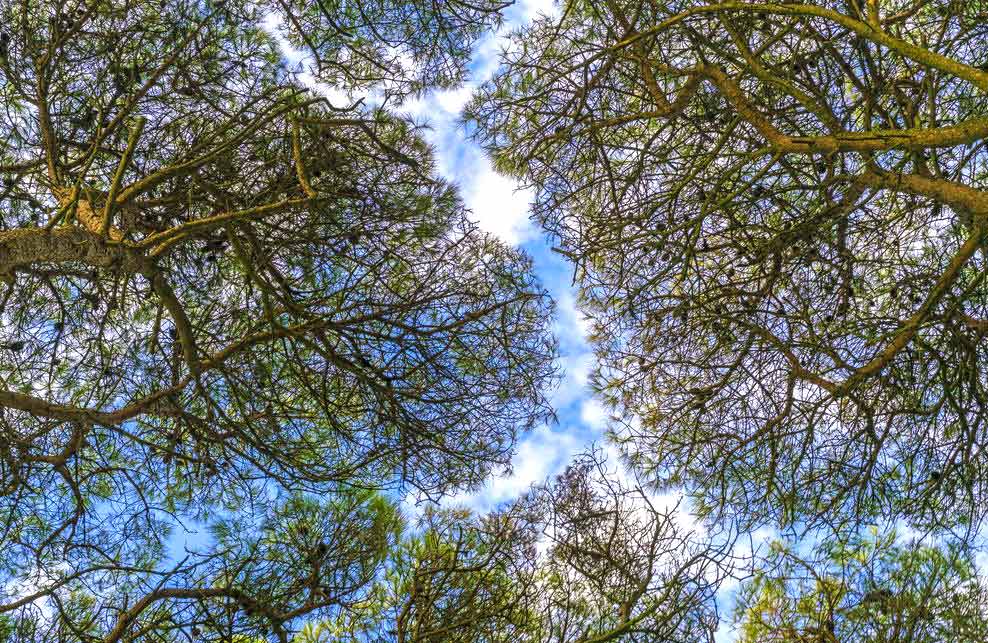
A tree that can kill!
There is a tree that is so poisonous that it can kill a human being. The Manchineel tree native to the Caribbean but also found in Florida has been classified as the most poisonous tree in the world by the Guinness World Book of Records. Every part of this tree, including the fruit, is poisonous. Anyone who comes into contact with the tree could get severe skin blistering, contact dermatitis, conjunctivitis, blindness, and severe gastrointestinal issues when ingested.
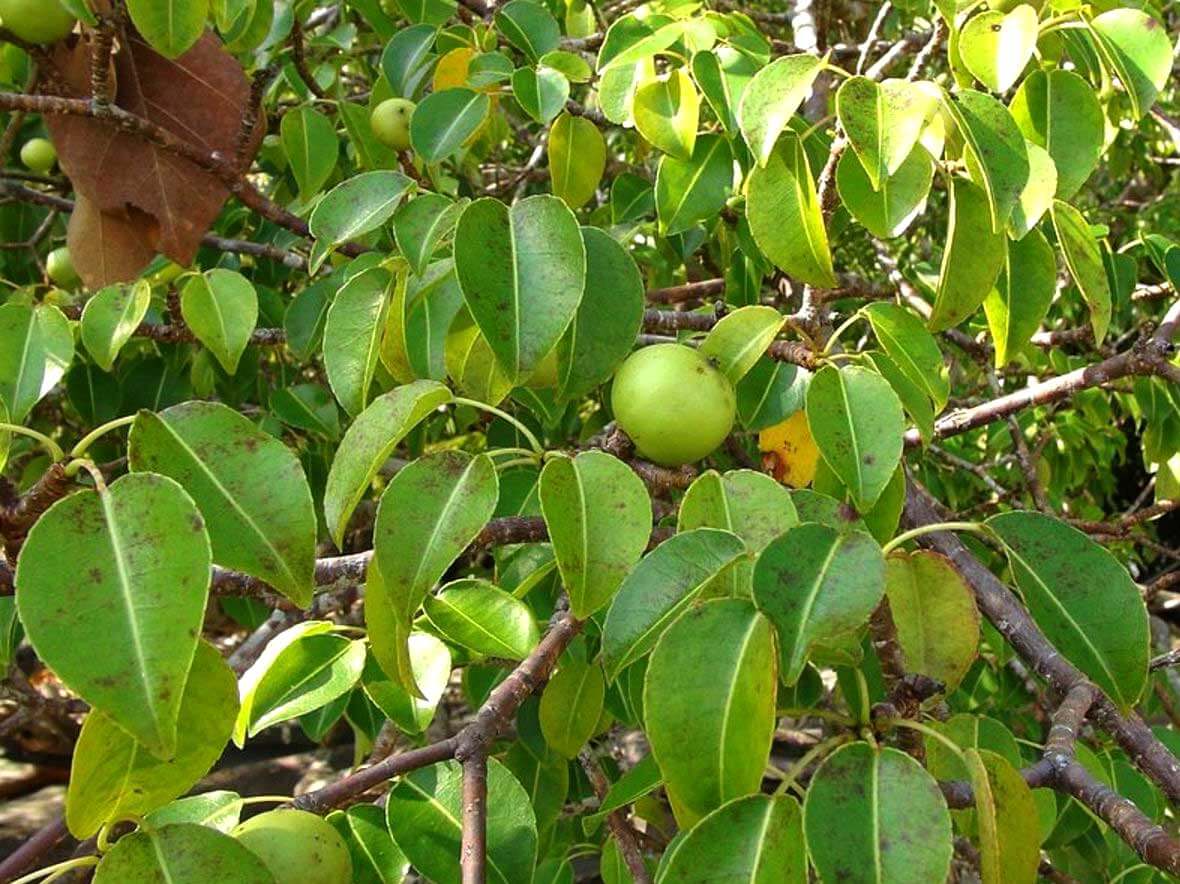
Trees are newcomers to our planet
Planet Earth has existed for around 4.5 billion years, while the earliest modern tree lived about 345-360 million years ago, according to a report published by Science Daily. This means trees are newcomers to the earth’s flora.
Millions of years ago, an extinct tree, the Archaeopteris, that was similar in structure to modern trees, dominated the earth’s forests during the late Devonian period.
The tree with rainbow-colored bark
The Eucalyptus deglupta tree is also commonly known as rainbow eucalyptus, rainbow gum, or Mindanao gum. This tree is native to the Philippines, Papua New Guinea, and Indonesia, but it also grows in New Britain, Ceram, and Sulawesi. This tree has a unique bark characterized by orange, blue, green, yellow, and maroon colors that give it a beautiful rainbow effect when hit by sun rays.
Pigment tannins produce this amazing coloration when the layers of cells on the tree’s bark age. In the United States, this tree is used for decoration. However, it is used for paper manufacturing and honey harvesting in its native lands.
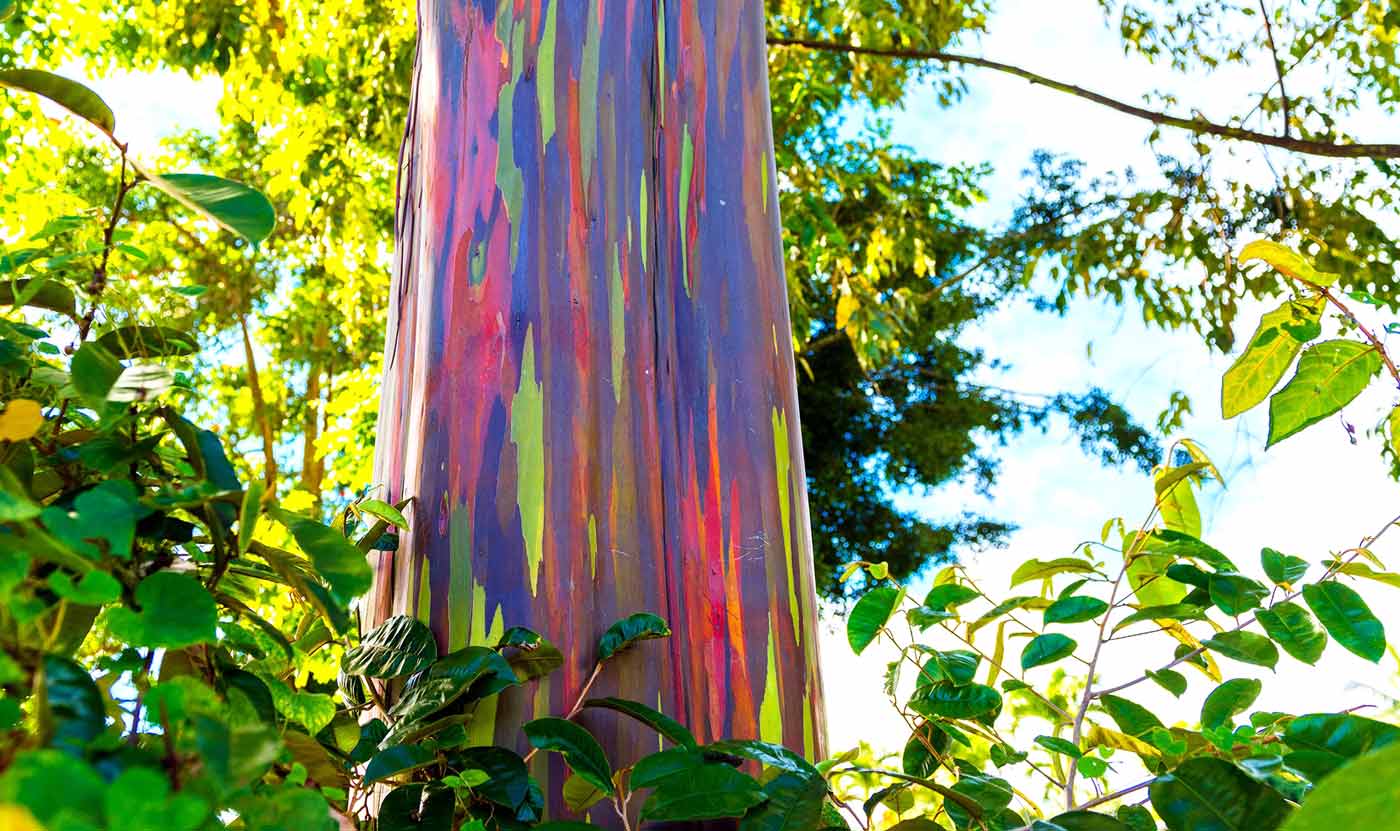
Trees can be stressed too!
Just like humans, trees are extremely sensitive to the environment they grow in. If the environment is favorable, they can grow healthy and beautiful. However, inadequate water, poor soil quality, or disruptions to their habitat or ecosystem can disrupt the trees’ photosynthetic cycle, thus affecting their growth.
Signs of a stressed tree include:
- Canopy dieback – sparse foliage and lots of dead branches.
- Codominant tree trunks – a tree with two codominant trunks converging in a distinguishable V-shape is most likely to be stressed.
- Cracks and splits – large cracks or splits may indicate decay.
- Leaning trees – trees lean over time, which is normal. However, sudden leaning caused by storms or other natural catastrophes is problematic.
- Leaf drop – loss of leaves during the wrong season is an indication that the tree is under stress from disease, extreme heat, and too little or too much water.
- Brown or wilting leaves – usually seen in newly transplanted trees that have not yet adapted to the new environment.
If you see any tree that looks stressed out, whether in your yard or the street, be kind enough to tend to it. You can enrich the soil, water it daily, and prune it if need be to help it recover from the stress.
There are 3 trillion trees on earth
According to a study published in the Nature Journal, the earth is estimated to harbor approximately 3.04 trillion trees. Isn’t this amazing! Unfortunately, since the onset of agriculture and civilization, the number of trees has decreased drastically.
Every year, more than 15 billion trees are cut down to create room for agriculture and human settlement. Wildfires are also a major culprit for tree loss every year.
Modernization and development play a big role in deforestation. It is not surprising that approximately 33% to 40% of all industrial wood traded in the world is used to make paper and pulp products, according to a report published by the World Wildlife Foundation.
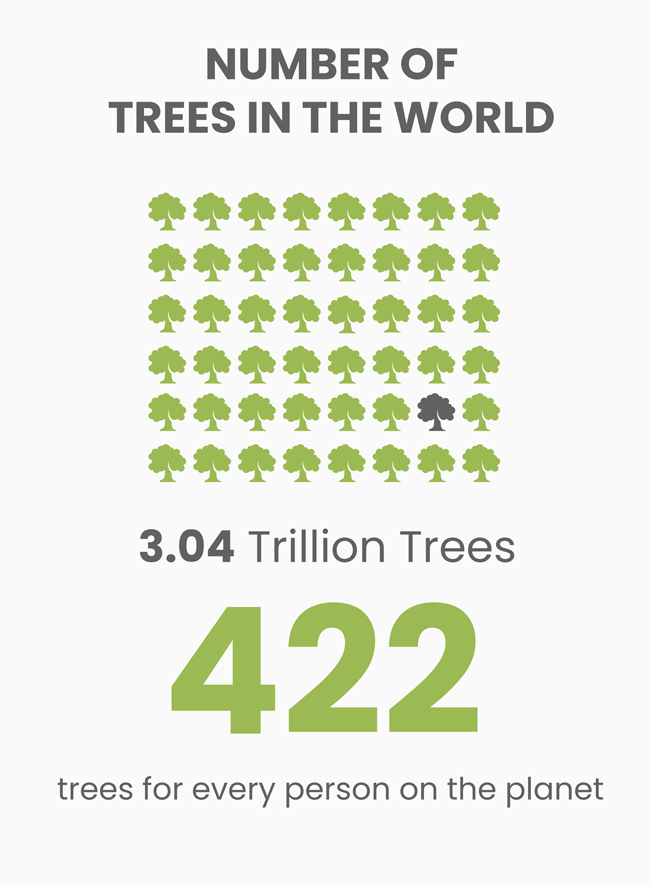
Trees can live for 5000 years!
The average lifespan of trees is between 100 to 600 years, but the exact time varies depending on tree species and external factors. Some trees last for thousands of years as long as their ecosystem is favorable. In fact, the oldest tree on the planet is older than the famous Egyptian pyramids.
There is a bristlecone pine tree popularly known as Methuselah that has been around for more than 4,800 years. The tree is located in the Inyo National Forest in the White Mountains of California. Methuselah is a proud holder of the Guinness Book of World Records certification for being the oldest named individual living tree.
According to the National Forest Service, the tree is at Schulman Grove, along the Methuselah Trail (4.5 miles hiking trail). However, the tree’s exact location is not disclosed to the public to protect it from overeager tourists and visitors.
Bristlecone pine trees can only be found in Nevada, California, Utah, Arizona, Colorado, and New Mexico.
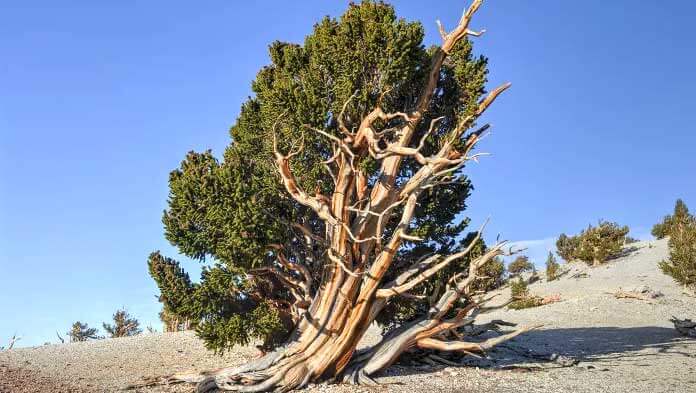
Trees get thirsty too!
Trees require lots of water to survive. They absorb water through their roots and transport it to other parts of the plant, including the leaves. Excess water is released as water vapor into the atmosphere through transpiration.
Mature oak trees can transpire approximately 400 liters (100 gallons) of water a day and about 151,000 liters (40,000 gallons) of water every year. Some larger tree species, such as the Sequoia trees, can transpire up to 500 gallons of water a day. This is according to a study done by the U.S.G.S.
This may seem unimportant to humans, but in reality, trees play a significant role in preventing flooding and soil erosion during heavy rains. More so, as trees gulp up water, they can help soak up pollutants as well.
Most tree species grow in only one country
Typically, you will find that certain tree species tend to grow in a particular geographical area. For instance, you will find the giant sequoia tree only in Washington, Oregon, and Northern California.
According to Science Magazine, the earth harbors more than 60,000 species of trees, but about 58% of these trees grow only in one geographical region.
The number of tree species in each country differs, with Brazil leading with more than 8,715 species. Almost half of these trees are unique to Brazil, which means you cannot find them in any other country.
Below is a table showing the top ten countries with the highest number of tree species.

Source: researchgate.net
Trees from the moon
In 1971, during the Apollo 14 mission to the moon, a NASA astronaut who was also a former United States Forest Service Smoke Jumper, Stuart Roosa, took seeds from a Loblolly pine, Sweetgum, Sycamore, Redwood, and Douglas Fir. When the astronaut returned to Earth, the United States Forest Service germinated the seeds and called them “Moon Trees.” The trees now grow at university campuses and state capitols around the nation.
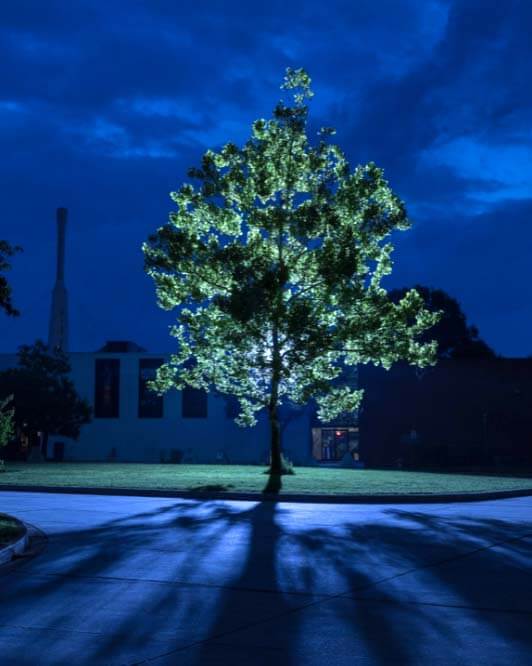
Trees can lower crime rates!
Studies show that nature helps people relieve stress, and the fresh air makes people feel calmer, happier, and relaxed. Neighborhoods with trees tend to be more vibrant and connected as people come together to care for these living beings and engage in activities such as block parties and community watches.
Researchers observed that trees provide a calm environment which means there will be less aggression and lower crime rates. More so, community members living in areas with more trees feel safer.
The Philippines are the Guinness World Record holder for planting the most trees in one hour
On the 26th of September, 2014, more than 160,000 Filipinos took part in the world’s largest tree-planting activity as part of a national reforestation program. The seedlings were planted at multiple locations in Southern Mindanao, Philippines.
The participants planted more than 3.2 million seedlings in just one hour, beating the old record of 1.9 million trees planted in India on 15th August 2011.
The trees planted included several forest varieties and commercial crops such as coffee, cacao, and rubber trees. Once mature, they can help fight climate change and boost the country’s economy.
Trees increase property value
Landscaping with healthy, mature trees can increase property value by up to 20%. Most people prefer homes with well-kempt trees and landscapes. However, not all trees can increase a home’s value. Here are several trees that can boost property value.
- Northern red oak
- Sugar maple
- Linden trees
- Concolor fir
- Bigleaf magnolia
- Crape myrtle
In reality, there is no specific tree that can boost your home’s value. The trick is to plant hardy trees resistant to diseases and suited for your planting zone.
A planet without trees is a dead planet. The loss of trees can cause climate change, soil erosion, desertification, flooding, and global warming, among other problems. On top of that, animals would lose their habitat, resulting in extinction. For this reason, you should dedicate your free time to caring for trees and plant as many as you can to replace the ones lost through deforestation. If you need help with your trees, contact a certified arborist in your area for a free quote.




